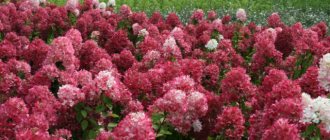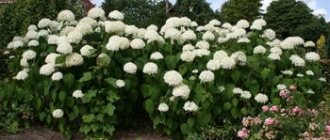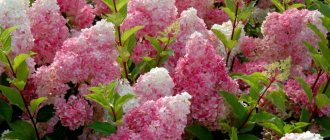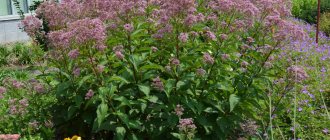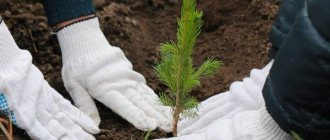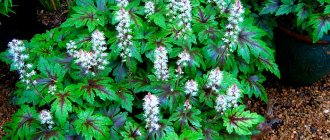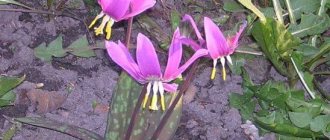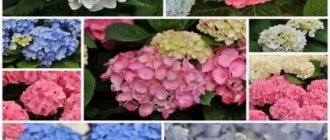The beauty of a garden must be created and maintained. Petiolate hydrangea will help you get an excellent visual result. Its main advantages are a delicate aroma that resembles honey, a variety of colors and shades, and good aesthetic characteristics.
Gardeners make it the center of the composition or plant it near the house, since hydrangea can reach a height of 8-10 meters. In order for a plant to become the pride of a site, you need to know what rules for care and propagation exist. Compliance with agrotechnical standards and choosing the appropriate variety will help transform the garden and even decorate the house.
Description
Petiolate hydrangea is a climbing plant with a height of 9–15 (up to 20) meters. Attached to the support by aerial roots. The leaves are glossy, broadly ovate, pointed, serrated with a long petiole, deciduous. The inflorescences are flat, approximately 20 cm. White sterile flowers have a circumference of 2.5–4.5 cm; in the center of the inflorescence there are smaller whitish fertile flowers with a diameter of 1–2 mm. The fruits are capsules, the seeds are small.
The dark green, glossy leaves of Hydrangea petiolate bloom in the spring, earlier than other deciduous climbing plants (for example, Maiden grape). The leaves are heart-shaped, smooth, long with serrated edges. Leaf density varies from plant to plant depending on the immediate growing conditions. Side branches tend to grow at right angles to the main vines.
The shoots form an uneven foliage pattern that is not possible with common climbing plants such as Maiden's Grape or Common Ivy. Petiolate hydrangea begins to bloom in June earlier than other frost-resistant hydrangeas. The inflorescences, usually 15 cm or more in diameter, consist of several hundred small fertile flowers surrounded by a crown of a dozen or more sterile ones. The sterile flowers are white, on long stalks, emphasizing their peripheral position.
The calyxes of sterile flowers are greatly enlarged, up to 2.5 cm in length and almost the same width, and have rounded outlines. The white color persists long after the fruiting flowers have faded, giving the impression of an unusually long flowering period.
The fruit is unattractive and technically a capsule (2.5 cm long). In winter, the stems and side branches have an interesting pattern, the yellowish-orange bark unevenly peeling off into large thin flakes.
Hydrangea petiole: planting and care in the Moscow region
Now gardeners have the opportunity to grow a wide variety of plants on their plots. After all, seedlings and seeds can be bought not only in the nearest flower shops, but also ordered via the Internet. Therefore, various exotic and simply unusual crops are extremely popular. And in fact, even the hydrangea known to many can be unusual. It can have the shape of a vine, which gives it a special charm. Such a plant is known as petiole hydrangea; let us clarify how it is planted and what care is necessary when growing this crop in central Russia, or more precisely in the Moscow region.
Story
Hydrangea petiolaris, a species known as the "climbing hydrangea," was introduced into horticulture in the United States in 1865 by Thomas Hogg, who was consul to Japan and, with his brother James, ran a nursery in New York. In addition to their own nursery, the brothers distributed seeds at Parson's Nursery in Flushing, New York. The Arboretum received seeds from Japan (presumably subspecies petiolaris) and has been growing it as a species since then. According to Haworth-Booth, Hydrangea anomala subsp. anomala was introduced to Britain in 1839 with subsp. peliolaris around 1878.
Hydrangea petiole: planting and care in the Moscow region
Now gardeners have the opportunity to grow a wide variety of plants on their plots. After all, seedlings and seeds can be bought not only in the nearest flower shops, but also ordered via the Internet. Therefore, various exotic and simply unusual crops are extremely popular. And in fact, even the hydrangea known to many can be unusual. It can have the shape of a vine, which gives it a special charm. Such a plant is known as petiole hydrangea; let us clarify how it is planted and what care is necessary when growing this crop in central Russia, or more precisely in the Moscow region.
Landing
Petiolate hydrangea takes root slowly, may not produce growth for a year or even two and blooms poorly after transplantation, prefers rich, well-drained, moist soil, and will grow in sun or shade. Once established, it has no serious pest problems. In the first two to three years after planting it grows rather slowly, but after rooting it accelerates the growth rate. Tolerates air pollution well and can grow in cities and industrial areas.
The first year or two after planting, growth may be slow or seemingly non-existent. As the bush takes root, especially if the tips of the stems can be securely attached to supports or structures, growth becomes surprisingly fast: 50-150 cm per year.
Before planting climbing hydrangea, the soil should be weeded and dug deep. It is better to plant the vine a little further from the supports, then direct the shoots towards them. The supports themselves must be strong to support the weight of an adult shrub. The distance between plants is 1.5-4 meters. In places exposed to strong gusts of wind, hydrangea shoots may break off their supports and fall to the ground; in such conditions, it is a good idea to tie up the plants.
Description of petiole hydrangea
Petiole climbing hydrangea is very popular among gardeners. This flower is often used to decorate areas.
Origin
In nature, the crop often grows in coniferous or deciduous forests. The flower can be found in Korea, Japan, and Sakhalin. It began to be grown as a cultivated plant in 1865 and has since become widespread.
Petiole hydrangea looks very attractive and is actively used to decorate garden plots
Peculiarities
The shrub is characterized by rather large dark green leaves. They have a sharp base. With the arrival of autumn, the foliage turns yellow, and in November it falls off. Creeping hydrangea can take on any shape, enveloping various objects.
In this case, the plant does not have a branched trunk. This feature is often used by landscape designers. They often combine the plant with other flowers on the site. Hydrangea has dense leaves that can shade the windows of the house and protect them from the summer heat.
The flowers of the bush are white, pale pink or purple. They form thyroid inflorescences, which reach 20 cm in diameter. Flowering lasts more than 2 months. Moreover, it begins in mid-June.
Important! The plant has a pronounced aroma, which is why it attracts bees and is an excellent honey plant.
The plant may have beautiful white flowers
Advantages and disadvantages
The main advantages of climbing hydrangea include the following:
- excellent decorative properties;
- possibility of application in landscape design;
- good winter hardiness.
At the same time, the flower also has a significant drawback. The plant can reach impressive sizes, so it needs to be tied to a support.
Winter hardiness
The culture is resistant to frost. Moreover, in harsh climates there is a risk of shoots freezing. Young plants grow very slowly. In the first few years they spend energy growing roots. Such bushes are less resistant to frost compared to adult plants.
From 5-6 years, hydrangea in the form of a liana gives impressive growth and is distinguished by abundant flowering. In the first 2 years after planting, it is recommended to lower the plant and completely cover it. At an older age, it is worth covering only the roots.
Where to plant?
Liana is great for cladding walls with porous surfaces, landscaping walls and fences, covering trash cans, covering gazebos, covering pergolas, trellises and posts. It looks very picturesque on the trunks of old trees. Climbing hydrangea is a good alternative to ivy; unlike ivy, it almost never freezes.
Hydrangea should not be planted too close to tree trunks or building walls; in these places the plant may experience a lack of water.
Diseases, pests and means of combating them
The plant often suffers from parasite attacks. Therefore, it needs to be processed every season. This must be done twice with an interval of 1 week.
The plant may also suffer from chlorosis. This pathology is accompanied by the appearance of a light yellow color of the leaves. A solution of potassium nitrate will help to cope with the problem. Ferrous sulfate can also be used.
Important! Gray rot that affects foliage is considered a dangerous disease. Fungicides will help cope with it.
Care
Climbing hydrangeas are relatively easy to grow. It is especially important to choose the right place so that the vine does not cause serious problems in the future. The shrub grows best in partial shade or shade, in a place protected from the wind. Young specimens are especially susceptible to drought and require regular watering. The species is completely hardy in USDA zone 4, but may not bloom in USDA zone 8.
When the vine reaches the upper limits of available support, climbing hydrangea reacts in the same way as ivy: it switches from vegetative growth to sexual maturity and produces flowers. Thus, a climbing hydrangea climbing a 10-meter-tall tree trunk may not bloom as quickly as one that only has a meter-long pole to climb. If flowering is a priority, provide relatively short support structures such as a 3-5 meter pole or wide ones such as stone walls.
Proper fertilizer is important when planting petiolate hydrangea next to a tree; due to tree competition, the soil can quickly run out of nutrients. Hydrangeas can be fertilized with well-decomposed compost or manure. Also mineral fertilizers for hydrangeas. All-purpose fertilizers are not suitable due to their calcium content. Excess calcium in the soil quickly leads to chlorosis (slight discoloration) of the leaves. Hydrangeas are fertilized from spring to mid-July. Then the plant is allowed to rest before winter.
The moving stems are amazingly inflexible and can break when trying to straighten them. To make matters worse, the older and thicker the stems become, the more brittle they become.
Climbing hydrangeas usually do not require pruning . If you need to limit its growth or give it shape, you can prune it when the vine finishes flowering.
Propagation of climbing hydrangea . Like other types of hydrangea, it can be propagated by summer cuttings. However, in amateur conditions it is easier to use layering.
Further care
In dry weather, each plant requires at least 20-25 liters of water once every 5-7 days. To maintain a stable level of humidity, you can install a sprayer next to the hydrangea. During the rainy season, watering is reduced to once every 4 weeks.
During active growth, petiole hydrangea is fed 4-5 times. In autumn, fertilize with ash (150 g per 1 square meter). It is necessary to limit the use of nitrogen-based fertilizers.
INTERESTING
To change the color of flowers from white to blue, special substances are used to water the plant. They are sold in specialized stores. Also, water with a solution of iron sulfate to color the flowers purple.
Reproduction by layering
Since old stems are notoriously fragile, in early spring you need to select a young, thin stem that is low, long and flexible enough so that the shoot can be easily bent to the ground. Place the brick on the soil-covered stem to support it (if necessary) and to prevent rain from washing away the soil. Drive a thick stake into the ground next to the buried vine, covered with soil, and tie the top of the stem to it as close as possible without breaking the stems; if there is support, the vine will take root faster.
Reproduction
There are several methods of culture propagation. Each of them has some advantages and disadvantages.
Growing from seeds
Propagating hydrangea by seed is considered a very labor-intensive procedure. Small seeds of the crop should be planted in plastic or wooden boxes with a nutrient substrate. After planting, the container should be covered with glass. The boxes should be placed in a warm place with a temperature of +18..+23 degrees.
Subsequent care involves timely watering, maintaining optimal temperature and humidity. After 1.5 months, the first shoots will appear.
Important! In April, cotyledon leaves appear on the bushes, which is a signal to dive. The plant can be planted in open ground only after 2 years.
Cuttings
Hydrangea can be propagated from cuttings. To do this, you will need shoots measuring 15 cm. The procedure is recommended to be carried out in early summer. In this case, it is necessary to select a shoot that contains at least 2 nodes. The top part and 2 bottom leaves should be removed from it.
Then the cuttings should be treated with a growth stimulator and placed in a mixture of peat and sand. The container should be covered with film and opened occasionally.
The plant can be propagated by cuttings
Dividing the bush
To divide the bush you need to dig it up. Then shake off the soil and divide it into several fragments. It is recommended to do this with a sharp knife.
After this procedure, the damaged areas should be sprinkled with activated carbon. Then the hydrangea fragments should be planted in a new place.
By layering
To propagate the crop, carefully bend the lower shoot to the ground and secure it. In this case, the soil should be moist and loose. In the area of contact with the ground, you need to make an incision and cover it with peat.
When roots appear on the layering, it needs to be separated from the mother bush and planted in a permanent place. Reproduction begins in May or August.
Use in the garden
Petiolate hydrangea can be effectively used as a ground cover plant in hard-to-reach places. Good for stone fences or brick walls, although the growth rate is slower in such areas, the growth rate increases if the vine is wrapped around a tree.
When growing petiole hydrangea, you should take some precautions. In the case of a wall, especially in a building, the vine should be grown on the dark side.
The north or northeast side is better suited for growing. If grown in the south, the bush may be damaged by the sun and perform poorly.
It should be noted that hydrangeas drop all of their leaves as one unit, usually in early winter, which can be a challenge when harvesting. Therefore, planting against a wall behind existing plantings such as Rhododendron and Enkianthus should be avoided. Petiolate hydrangea climbs by means of secondary roots, which, penetrating into the substrate, apparently cause little damage than other climbing plants. Haworth-Booth suggested growing petiolate hydrangea along with beautiful Nasturtium.
A fine example of Hydrangea petiolate grown from seed in 1892 can be seen in the northeast corner of the office building on Jamaica Plain.
Growing a climbing hydrangea on a tree should be started on a mature specimen, since over time the vine will begin to grow quickly and braid all the branches.
Using climbing hydrangea in landscape design
Culture is often used in landscape design. It can be used to decorate gazebos, hedges, and garden buildings. To ensure proper growth of the crop, you can make a wire support.
Culture is often used in landscape design
Ampelous hydrangea (a petiolate variety) grows well in hanging flowerpots - it can be used to decorate verandas and terraces.
Petiole hydrangea is a beautiful plant that is chosen by many gardeners. For a crop to bloom well, it needs to be provided with quality care. It should include proper watering, fertilizing, and pruning. Protection from diseases and harmful insects is of no small importance.
Hydrangea care
The basis for caring for this plant is watering approximately once every 10-15 days. In the first year he must be very thorough. Hydrangea roots cannot take enough moisture from the soil. Therefore, by saving on watering, you risk destroying the young seedling.
Advice. In the warm season, petiole hydrangea requires a particularly large amount of moisture and air. If possible, install a sprayer next to the seedling.
If your plant spreads like a beautiful carpet, as in a painting or photo, you don’t have to trim it. You should only periodically remove dead or diseased shoots. If the hydrangea grows vertically, its shoots must be regularly shortened, their growth must be directed in the right direction, and support must be provided for them. Pruning promotes the abundant appearance of lateral branches, which create a dense cover.
Hydrangea tolerates pruning very well
Despite the fact that petiole hydrangea is considered quite resistant to frost and is grown even in Siberian conditions, young plants still need to be covered for the winter in the first few years. To do this, the shoots should be carefully laid on boards and covered with spruce branches or fallen leaves. This is especially true for those owners of personal plots who live in the northern regions.
Description of the plant
The leaves of petiolate hydrangea are dark green, oblong, with jagged edges, smooth and shiny. They reach 10 cm in length.
The shoots are bare, red-brown, with aerial roots and suckers that allow them to cling to any support (see photo).
Inflorescences are corymbose, loose. Flowers can be white, pink and light purple. Climbing hydrangea blooms in June-July. The plant has fertile and sterile flowers; pollination is carried out with the help of bees. The flower emits a wonderful aroma and is a honey plant.
The young plant begins to bloom at 2-3 years of age. The first flowers appear on older lower branches. At the same time, the petiolate hydrangea bush resembles a ballerina in a white tutu.
Varieties and varieties of petiole hydrangea
This plant is a subspecies of garden hydrangea.
Both in the photo and in reality it looks like a vine that can entwine trees and various objects in the garden, decorate a hedge, and grow along the wall of a house. Aerial roots and special suckers help her with this. Petiolate hydrangea is characterized by high winter hardiness; adult bushes can withstand short-term frosts down to -30°. Thanks to its dense foliage, this plant shades windows well, preventing summer heat from entering the house. The most popular varieties of petiole hydrangea are:
- Miranda. Has a sweet smell. The leaves are dark, light green in color, with white veins, wide and pointed in shape;
Variety Miranda
- Climbing vine. It has an interesting feature: using various dyes, the white flowers of this hydrangea can be given any shade;
- Cordifolia. Its inflorescences look like small panicles and smell deliciously of honey;
Variety Cordifolia
- Petiolaris. A favorite of landscape designers. This is the tallest variety of petiole hydrangea, it grows up to 25 m. It spreads along the ground or entwines trees.
Features of planting climbing hydrangea
Seedlings are assigned to a permanent place of growth no earlier than three years of age, when they are sufficiently strong and acquire high frost resistance. Without knowing how to choose the optimal place for planting, you can significantly delay the growing season and not get the vine to bloom.
Climbing hydrangea prefers a place protected from harsh winds. For this reason, it is not recommended to plant it near mesh fences that are blown from all sides. It is recommended to choose quiet areas for planting with free access to sunlight in the first or second half of the day.
Midday sun has a depressing effect on the growing season and exposes hydrangea to stress.
Wet or overly wet areas with poor soil are also not suitable. If there are no other options, the hole is well drained or embankments are prepared for planting vines. A rock garden is a good way out of this situation. The wildly growing vine will quickly entwine the largest boulders.
Absolutely all hydrangeas, including its climbing variety, cannot tolerate alkaline, calcareous soils. Before planting a seedling, you need to examine the acidity level of the soil.
Sequence of actions when planting climbing hydrangea:
- It is better to prepare the planting hole in the fall. The volume of the hole should be twice the size of the root system.
- Planting is carried out in early spring, before sap flow begins.
- The best option would be to fill the hole with a substrate whose composition is close to the soil in which the seedling was grown. You can add a handful of mineral fertilizers.
- The roots are straightened radially, guaranteeing good stability to fast-growing shoots.
- The root collar is not deepened so as not to slow down the growth of the vine.
- The soil is thoroughly trampled down after the plant is planted in the hole to eliminate air pockets. Roots caught in an air trap die quickly. Moisture-loving hydrangea is watered immediately after planting, using at least 20-30 liters of water.
- The top layer of soil is mulched to prevent rapid evaporation of moisture.
The following materials are ideal as mulch:
- Dry leaves, needles of park trees. Garden waste should not be used for mulching as it may contain pests.
- Crushed peat, which increases soil acidity.
- Coniferous tree bark also has a positive effect on soil acidity and aeration.
- Large sawdust, dry straw, and moss also prevent the soil from drying out and serve as an excellent fertilizer.
Diseases and pests of hydrangea
If your plant's leaves have turned pale, it is likely suffering from chlorosis. This disease occurs if the soil contains a lot of humus. Another reason is excess lime in the ground. Hydrangea is very sensitive to this component. Sometimes the vine is damaged by powdery mildew or gray rot. To prevent this, do not overdo it with nitrogen fertilizers and watering, especially during the rainy season. To combat diseases, you can use, for example, Bordeaux mixture.
Hydrangea blossom
Hydrangea is susceptible to insect damage, including spider mites, thrips and aphids. The latter is more dominant than plants in closed ground. To kill pests, you need to use insecticides. Each season, do 2 treatments a week apart. By following all the recommendations, you will get a healthier and more beautiful plant that will become a luxurious accent in your garden.
Hydrangea in the garden: video
Types and varieties of hydrangea: photo
How to care for a garden vine
The perennial vine does not cause much trouble if the choice of location and planting were carried out according to all the rules.
Basic care for climbing hydrangea consists of:
- timely watering;
- fertilizing;
- pruning shoots.
Young seedlings that have not reached three years of age need additional insulation for the winter. This is not resorted to if the area is characterized by mild winters with short frosts.
The intensity of watering depends on many factors and there is no single recommendation that is true for every garden.
Please pay attention to:
- Soil moisture capacity to prevent excessive waterlogging and waterlogging.
- Weather. In hot weather, hydrangea is watered more often. The interval between waterings is reduced to two to three days in the absence of natural precipitation in the form of dew or rain.
- The vegetative phase of plant development. Hydrangea is regularly watered during the phase of active growth, flowering, and fertilizing.
A newly planted plant is watered as the top layer of soil dries, but at least once every six to eight days.
Hydrangeas are watered by the root method. It is advisable not to carry out artificial irrigation, so as not to expose the vine to stress. The top layer of soil is loosened after each watering. Using mulch eliminates this hassle.
Watering is reduced after flowering is completed. This usually occurs in early to mid-August. Reducing the intensity of watering has a beneficial effect on the maturation of young shoots and the general preparation of the vine for the upcoming dormant phase.
Root application of fertilizers is always accompanied by preliminary and subsequent watering. There are regular and seasonal feedings of climbing hydrangea.
The following seasonal fertilizing is applied to each m²:
- At the beginning of the growth phase (April-May), potassium sulfur, urea, and superphosphate are used in equal proportions.
- At the beginning of budding (May-June) – potassium sulfate and superphosphate.
- At the end of flowering (July-August) - organic fertilizers.
The interval between regular feedings is two weeks.
It is recommended to use organic fertilizers:
- wood ash;
- bird droppings;
- rotted manure.
All feeding is stopped in August or September, depending on local climatic conditions, so that the young shoots have time to become lignified and the hydrangea does not freeze in winter.
It is important to periodically test the soil for acidity levels. Alkalinization of the soil is a natural process and requires periodic adjustment with copper-containing preparations.
Crown pruning, both corrective and preventive, is necessary for all perennial crops. Climbing hydrangea is no exception. The main pruning is carried out in early spring, before the buds swell. Poorly overwintered, weak shoots are excluded.
Hydrangea tolerates pruning well and responds to it with more abundant flowering.
Corrective pruning depends on the method of growing the garden vine and the wishes of the owner. It is recommended to cut branches by two-thirds of the length, up to the second or third bud. Subsequently, the vine will send out numerous side shoots, on which numerous flower stalks will form. Cut branches can be used for germination to produce new climbing hydrangeas.
The crown of the vine should not be too thick, so as not to create favorable conditions for garden and flower pests.
A liana grown as a ground cover crop does not need such radical pruning. It is necessary to remove damaged and weak shoots that divert nutrients from the flower buds.
During the season, flower stalks of faded inflorescences are regularly removed.
Preparation for winter begins in early August or late September, when the last feeding with organic matter is carried out and watering is stopped. Gardeners independently adjust this activity based on the climatic conditions of the area, but no later than two months before the onset of the first frost.
Young vines are prepared for winter after the end of leaf fall, when the night air temperature steadily drops one or two degrees below zero.
Gardening work is carried out in the following sequence:
- the soil under the hydrangea is generously mulched with dry material;
- the branches of the plant are carefully removed from the support and laid on mulched soil;
- they are covered with spruce branches, fine bark, and straw on top, forming a kind of mound;
- The mound is covered with waterproof material: film, roofing felt, etc.
Further insulation depends on the severity of winter conditions. You can organize another bulk layer, which is also covered with waterproofing material. It would not be superfluous to make a final layer of sackcloth, burlap, or old rugs if bitter frosts persist for a long time in winter, and heavy snowfalls alternate with short-term thaws.
